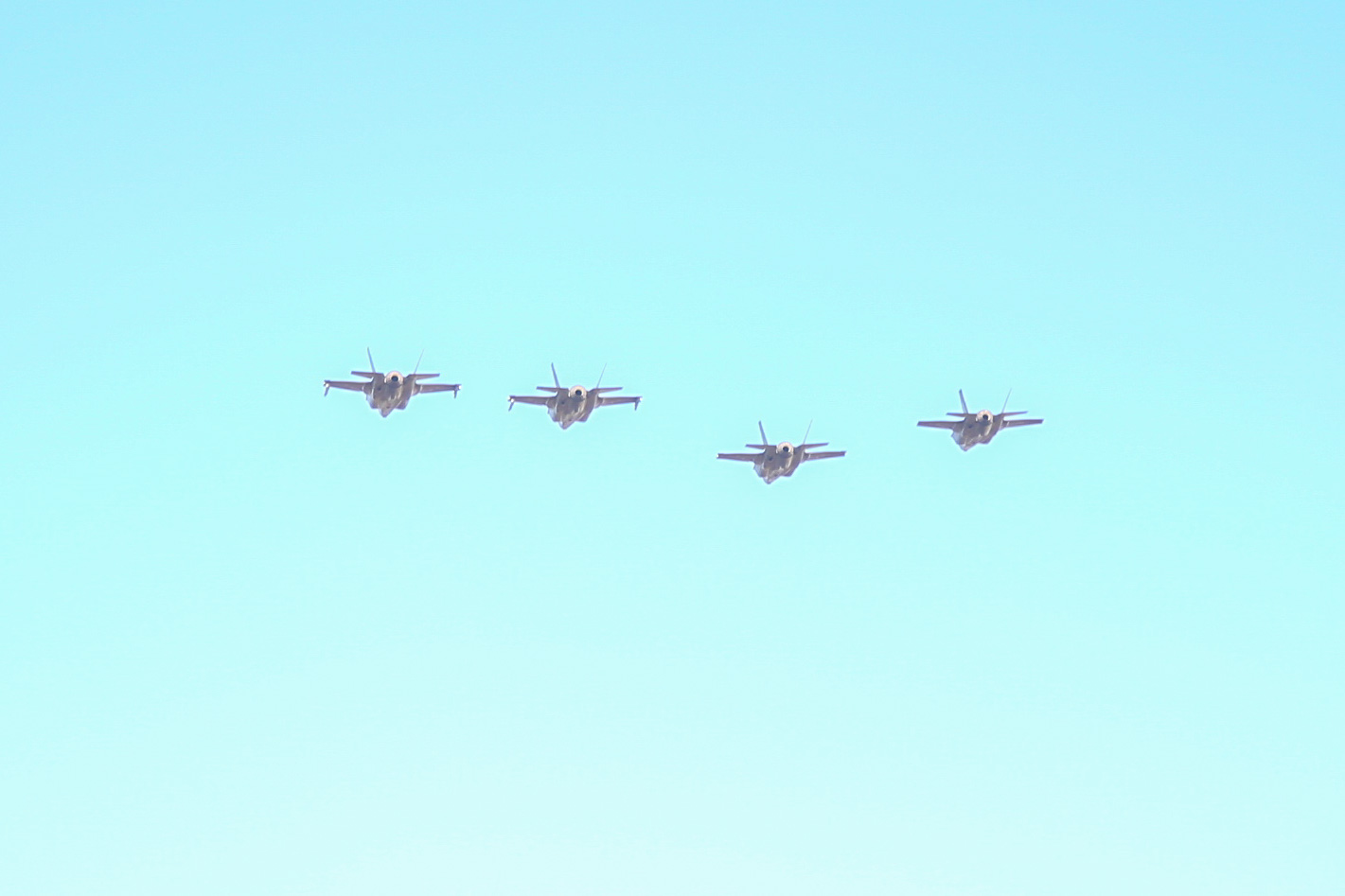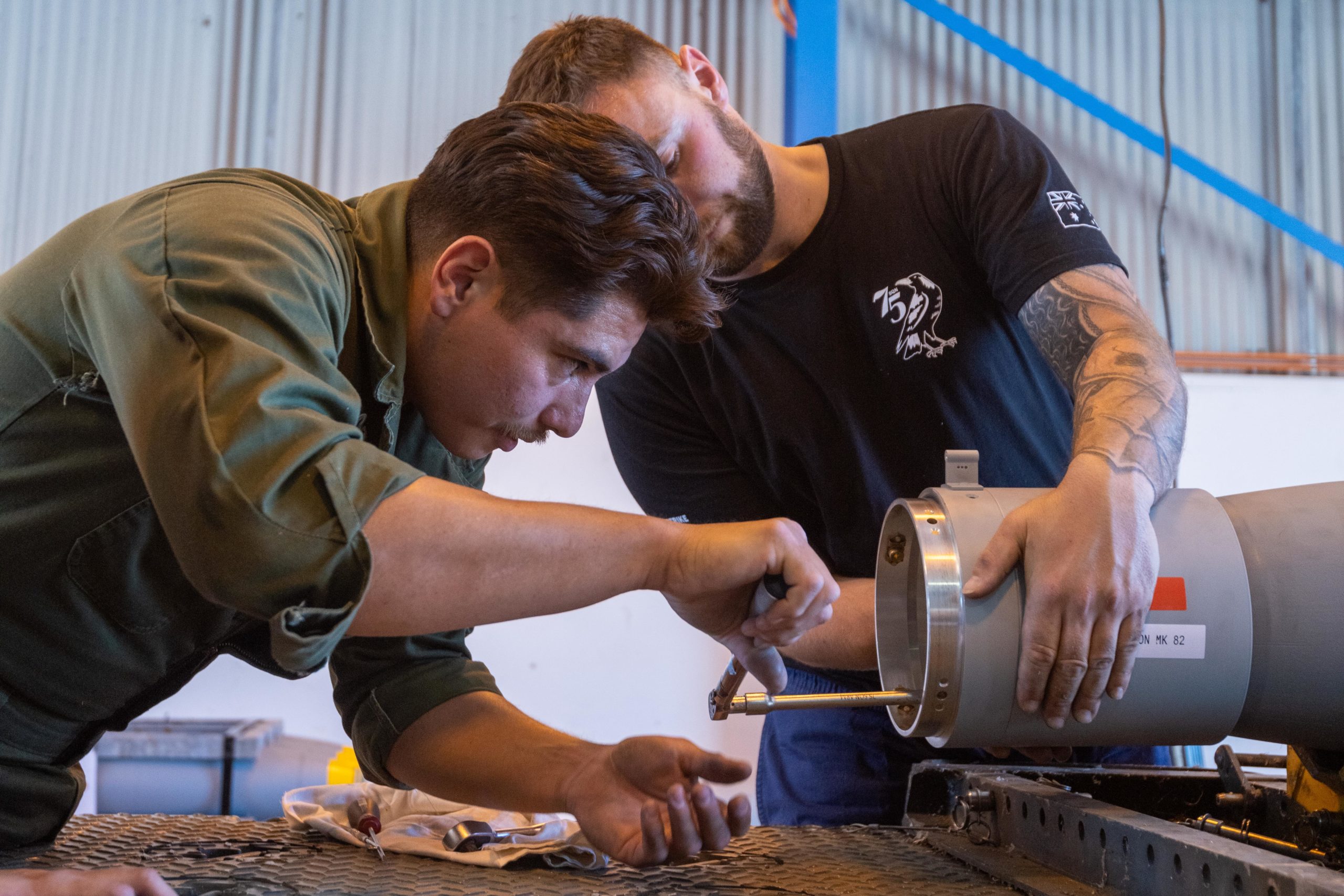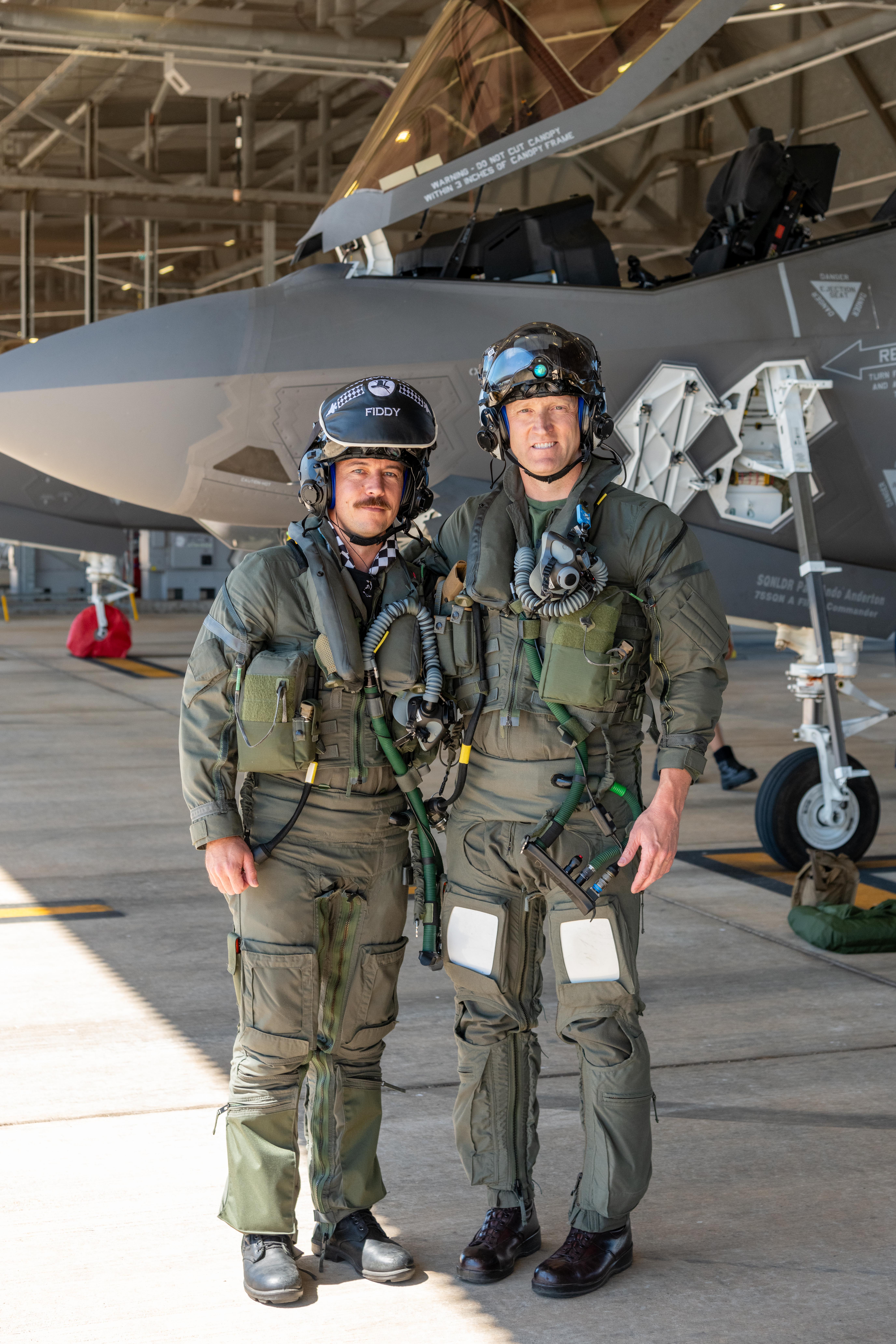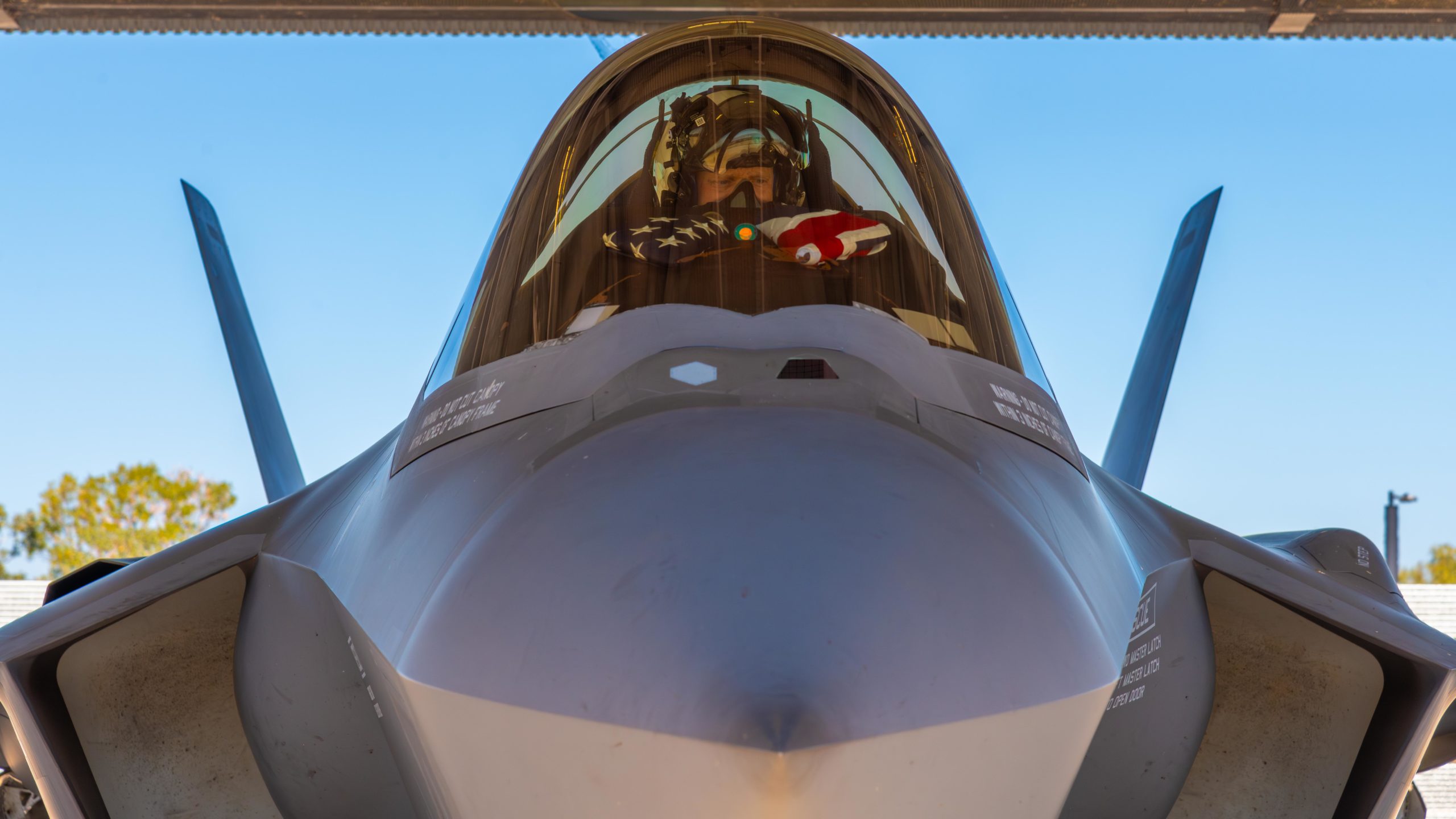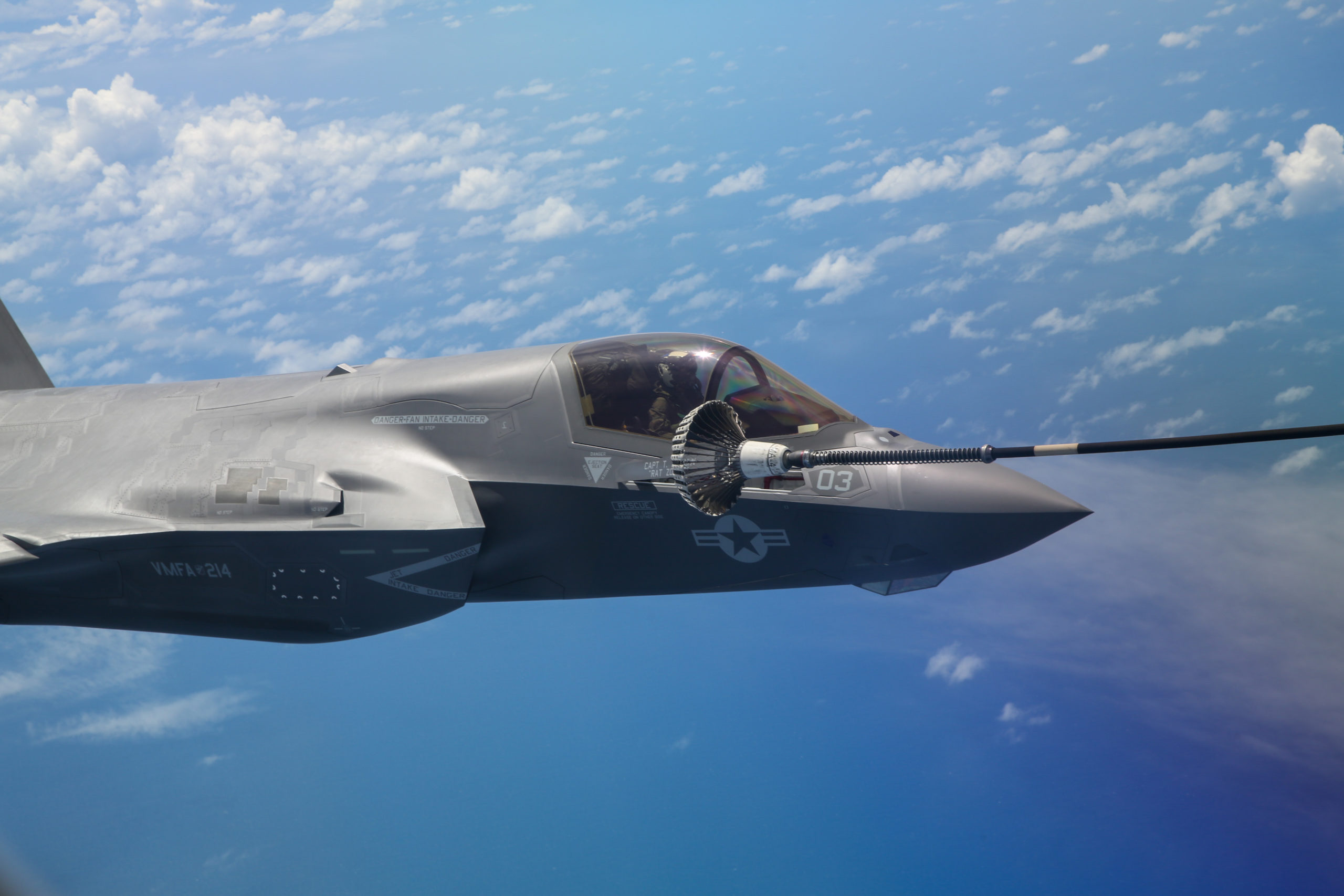In an article by Cpl. Nicholas Johnson, 3rd Marine Aircraft Wing, published on July 6, 2024, interchangeability between the RAAF and the USMC was emphasized as follows:
In a demonstration of the ever-increasing interchangeability between U.S. Marine Corps and Royal Australian Air Force aviation, two F-35B Lightning II pilots with Marine Fighter Attack Squadron (VMFA) 214, Marine Aircraft Group 13, 3rd Marine Aircraft Wing, flew RAAF F-35A Lightning II aircraft, June 13, 2024.
“Interoperability is two different organizations figuring out ways to work together; interchangeability means the entire allied F-35 force can pool parts, maintainers, weapons, tactics — and now pilots and aircraft — to accomplish any mission,” said U.S. Marine Corps Lt. Col. Robert Guyette, commanding officer of VMFA-214.
Guyette and Maj. John Rose, executive officer of VMFA-214, took part in the bilateral training. The pilots flew RAAF F-35A jets alongside RAAF and USMC pilots in their respective platforms.
“Our formations are completely blended, and our pilots pull the same lessons learned from this incredibly realistic training,” Guyette said. “When the XO and I flew in the RAAF F-35As, we spent zero time briefing procedural differences in execution, because we have been adhering to the same standards as the RAAF from day one.”
Guyette flew alongside his counterpart, Wing Commander Andrew Nilson, commanding officer of No. 75 Squadron.
“The most impressive aspect of the exercise has been the depth of interoperability and interchangeability between our two nations,” Nilson said.
“It was a further demonstration of our cooperation that Marine Corps pilots were able to fly RAAF F-35A aircraft during the exercise, allowing the RAAF to share and learn tactics, techniques and procedures at a level of complexity that has truly tested the F-35’s capability.”
Incorporating two aircraft variants, pilots and maintainers from both teams introduced additional planning complexities at every organizational level.
“The mission planning factors for each event are very challenging, realistic, and relevant for high end conflict against the peer adversary,” Rose said.
“This ‘fight together’ mindset has also been enhanced by the personal relationships established between the Marine Corps and the RAAF,” Rose said. “VMFA-214 and RAAF No. 75 squadron were on the same tactical page from day one.”
VMFA-214’s transpacific deployment was preceded by a similar one executed by Marine Fighter Attack Squadron (VMFA) 314, Marine Aircraft Group 11, 3rd MAW, in the summer of 2023.
VMFA-314, an F-35C Lightning II squadron from MCAS Miramar, deployed four F-35C aircraft across the Pacific to RAAF Base Williamtown, New South Wales, and trained alongside RAAF No. 3 Squadron.
“VMFA-314’s detachment to Australia last year provided a winning template and really did an excellent job of setting the proper conditions for VMFA-214 to be successful this year,” Rose said.
“They passed on lessons learned, which VMFA-214 leveraged to efficiently deploy the squadron from MCAS Yuma across the Pacific to RAAF Base Tindal, Australia.”
After reviewing VMFA-314’s deployment, VMFA-214 was prepared to deploy an additional four jets this year, expanding the latitude of training options for both Marines and the RAAF. Beyond professional growth, the Marines of VMFA-214 forged personal connections and friendships with RAAF aviators during the deployment.
“I have some long-time friendships within the RAAF that go back to my first Marine Corps fleet tour,” Rose said. “It has been such a cool experience to see my old Australian friends and get the opportunity to fly in such high-level events with them.”
VMFA-214’s deployment honed combat readiness and strengthened enduring friendships that underscore the U.S.-Australia military alliance. Marine Corps and RAAF aviators will continue to “train together, fight together,” preparing for any challenge to the Indo-Pacific region.
And in an article by Flight Lieutenant Greg Hinks published on July 11, 2024, by the Australian Department of Defence, this cooperation was highlighted as follows:
The skies over the Northern Territory came alive with different variants of the F-35 Lightning II in May and June, with aircraft from RAAF and the US Marine Corps (USMC) training together for Exercise Magpie Lightning.
Magpie Lightning involved more than 200 marines from the USMC ‘Black Sheep’ – Marine Fighter Attack Squadron 214 (VMFA-214) – flying F-35B Lightning II aircraft to RAAF Base Tindal to work alongside RAAF F-35A Lightning II crews from 3 Squadron and 75 Squadron.
The exercise showed how both forces can seamlessly integrate by sharing aircraft and air and ground crews.
Fast-jet pilots from USMC took the controls of RAAF F-35A Lightning II aircraft, conducting training in offensive counter air, defensive counter air, suppression of enemy air defences, and strike mission sets during the day and at night.
Commanding Officer 75 Squadron Wing Commander Andrew Nilson demonstrated the depth of interchangeability between RAAF and USMC by joining his counterpart from VMFA-214, Lieutenant Colonel Robert F. Guyette, in a formation flight.
“The most impressive aspect of the exercise has been the depth of interoperability and interchangeability between our two nations,” Wing Commander Nilson said.
“RAAF and USMC crews have conducted cross-platform maintenance work and the aircrew have conducted complex training sorties using the most contemporary shared tactics in mixed RAAF and USMC formations of F-35A and F-35B aircraft.
“It was a further demonstration of our interoperability that USMC pilots were able to fly RAAF F-35A aircraft during the exercise, allowing the RAAF to share and learn tactics, techniques and procedures at a level of complexity that has truly tested the F-35 capability.
“The exercise also demonstrated interchangeability of some of our weapons with USMC F-35B aircraft loading, carrying and employing Australian prepared and owned air-to-surface munitions.”
‘The most impressive aspect of the exercise has been the depth of interoperability and interchangeability between our two nations.’
Lieutenant Colonel Guyette echoed these sentiments.
“What we are seeing here is the RAAF and the Marine Corps moving past interoperability and on towards interchangeability,” Lieutenant Colonel Guyette said.
“Interoperability is two different organisations figuring out ways to work together. Interchangeability means the entire Allied F-35 force can pool parts, maintainers, weapons, tactics, and now pilots and aircraft, to accomplish any mission, anywhere, side-by-side with who and what we have on hand.
“We still have many opportunities to tie-in even closer, but these flights clearly demonstrate that there is no limit to the level of interchangeability we can achieve.”
The integration between the forces began well before VMFA-214 arrived in Australia for Exercise Magpie Lightning, when a 33 Squadron KC-30A Multi Role Tanker Transport aircraft from RAAF Base Amberley supported USMC’s Guam to Tindal portion of the trip.
33 Squadron provided aerial refuelling for two USMC F-35B Lightning II aircraft, travelling days after the first USMC aircraft departed due to the scheduled US tanker becoming unavailable.
Operations Officer VMFA-214 USMC Major John-Paul Reyes was impressed by the seamless cooperation between RAAF and USMC in getting the aircraft to Australia.
“When US refuelling capability was challenged and the Tanker Airlift Control Centre couldn’t get us to the finish line, the RAAF stepped up and got us there,” Major Reyes said.
“Coordination with RAAF HQ Air Command, RAAF Air Mobility Control Centre and 33 Squadron was seamless. Communication and connecting through different point of contacts was quick and exceeded expectations.
“It was clear they were all in to support the US. They prioritised our mission and understood the importance of US F-35Bs arriving in Australia to support follow-on tasking.”
It was equally important for Flying Officer Lachlan O’Brien, KC-30A co-pilot for the mission.
“It is an awesome opportunity to engage and develop further experience with the United States Marine Corps personnel and their F-35Bs, particularly for long-range air-to-air refuelling exposure,” Flying Officer O’Brien said.
This is the first iteration of Exercise Magpie Lightning involving aviators and aircraft from RAAF’s 3 Squadron and 75 Squadron, and VMFA-214 USMC.
Editor’s Note: I particularly like this one which highlights the Australian Airbus tanker refueling the USMC aircraft, as the Australians were the launch customer of the very successfully Airbus tanker, the one the USAF originally chose.

Featured Photo: JUL 8, 2024
Royal Australian Air Force F-35A Lightning II aircraft assigned to the RAAF No. 75 Squadron conduct a flyover during a bilateral training flight alongside U.S. Marine Corps F-35B Lightning II aircraft assigned to Marine Fighter Attack Squadron (VMFA) 214, Marine Aircraft Group 13, 3rd Marine Aircraft Wing, over RAAF Base Tindal, Northern Territory, Australia, June 20, 2024. Leaders with VMFA-214, a USMC F-35B squadron, flew the RAAF F-35A during bilateral training, exhibiting interchangeability between RAAF and U.S. Marine aviation. VMFA-214 deployed more than 200 Marines and eight F-35B Lightning II aircraft from Marine Corps Air Station Yuma, Arizona, to RAAF Base Tindal, Australia, to conduct bilateral training with the RAAF No. 3 Squadron and No. 75 Squadron. This iteration of bilateral training allowed for complete interchangeability between RAAF and USMC aviation forces when VMFA-214, an F-35B Lightning II squadron, leaders flew RAAF F-35A variant aircraft. (U.S. Marine Corps photo by Cpl. Nicholas Johnson)


